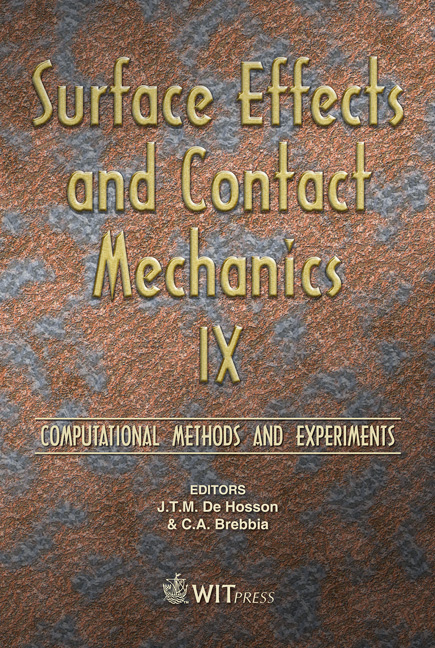Identification Of Elasto-viscoplastic Material Properties From Indentation Testing Using An Inverse Method
Price
Free (open access)
Transaction
Volume
62
Pages
12
Page Range
127 - 138
Published
2009
Size
501 kb
Paper DOI
10.2495/SECM090121
Copyright
WIT Press
Author(s)
G. Rauchs & J. Bardon
Abstract
A combination of finite element modelling with gradient-based numerical optimization is used to determine the material parameters of a mechanical constitutive law from indentation testing by minimizing a cost function, quantifying the difference between load versus displacement-into-surface curves obtained from experiments and from finite element modelling. The required gradients of the cost function are calculated through a sensitivity analysis based on the direct differentiation method. Approximate correlation or cosine matrices will be calculated for assessing parameter correlation and used for designing load histories, which improve the parameter correlation in indentation testing. Finally, experimental indentation curves from metallic materials will be analyzed using the inverse method. The impact on material parameter identification of indenter tip size and of the incorporation of residual imprint data, obtained by white light interferometry, into the objective function will be monitored. Keywords: indentation testing, finite element modelling, numerical optimization.
Keywords
indentation testing, finite element modelling, numerical optimization





